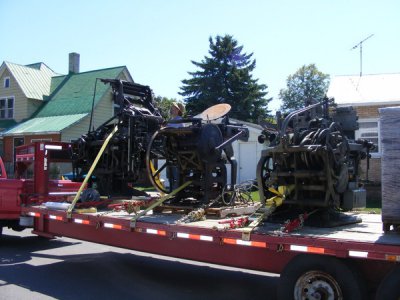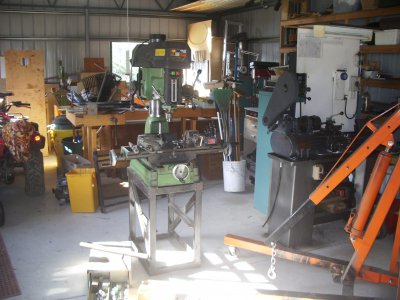Hello,
I have just bought a Rong Fu mill very similar to this one http://www.ebay.com.au/itm/151748144655
Cost me approx $500 US dollars, figured I had to buy a mill, any mill, and start learning and then buy the mill that I really need after having done some learning.
I know nothing about mills - I know I want to learn how to use one. I went for this because its local and easy to get to and it looks solid rather than flimsy with plastic gears and narrow rubber belts etc.
From available online manuals it looks like it weighs approx 300kg.
Gulp !! and I thought the 160kg small 9" lathe was big and heavy.
So .......... Any traps or tips regarding shifting this thing ?
and could we turn this thread into a general tips and traps thread for newbies who have just bought their first heavy thing whether it be a grinder / lathe / mill / shaper / anything
Any good previous threads or web pages ? Will do some googling.
WHats your standard toolkit of useful things to take with you ?
So far I have assembled
Spanners, and shifting spanner, and pliers
Pencil paper
tape measure
round wooden posts 3" diameter for rollers to roll this thing along the floor
battery drill and drill bits and screws
some very slippery offcuts of teflon
some sheets of plywood - might be able to make a sled with the Teflon
big crowbar
smaller pinch bars "jemmy"
2 x 1000kg rated slings
and a mate with a ute (pickup) with a hydraulic arm capable of lifting 900kg
ropes and tie down straps
big old armchair cushions
I do not own an engine crane - relying upon hydraulic arm in ute.
And yes .................... I realise that in the grand scheme of things this is not a big heavy machine - but put yourselves back in your newbie shoes - for many newbies this could be a huge task. Will be happier when it safely in the shed.
Bill
I have just bought a Rong Fu mill very similar to this one http://www.ebay.com.au/itm/151748144655
Cost me approx $500 US dollars, figured I had to buy a mill, any mill, and start learning and then buy the mill that I really need after having done some learning.
I know nothing about mills - I know I want to learn how to use one. I went for this because its local and easy to get to and it looks solid rather than flimsy with plastic gears and narrow rubber belts etc.
From available online manuals it looks like it weighs approx 300kg.
Gulp !! and I thought the 160kg small 9" lathe was big and heavy.
So .......... Any traps or tips regarding shifting this thing ?
and could we turn this thread into a general tips and traps thread for newbies who have just bought their first heavy thing whether it be a grinder / lathe / mill / shaper / anything
Any good previous threads or web pages ? Will do some googling.
WHats your standard toolkit of useful things to take with you ?
So far I have assembled
Spanners, and shifting spanner, and pliers
Pencil paper
tape measure
round wooden posts 3" diameter for rollers to roll this thing along the floor
battery drill and drill bits and screws
some very slippery offcuts of teflon
some sheets of plywood - might be able to make a sled with the Teflon
big crowbar
smaller pinch bars "jemmy"
2 x 1000kg rated slings
and a mate with a ute (pickup) with a hydraulic arm capable of lifting 900kg
ropes and tie down straps
big old armchair cushions
I do not own an engine crane - relying upon hydraulic arm in ute.
And yes .................... I realise that in the grand scheme of things this is not a big heavy machine - but put yourselves back in your newbie shoes - for many newbies this could be a huge task. Will be happier when it safely in the shed.
Bill
Last edited:


